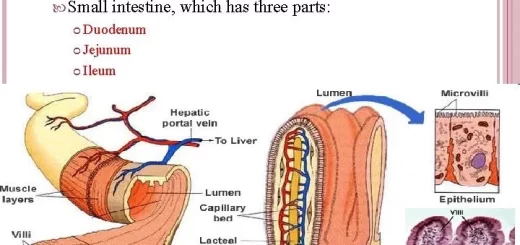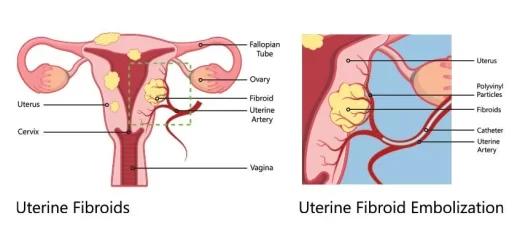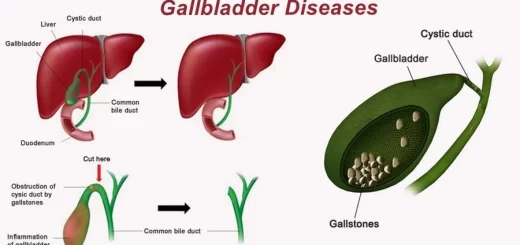Lipogenesis, Synthesis of cholesterol, Fatty acid synthesis and Regulation of fatty synthesis
Cholesterol is found in all the cells in the body, the body needs cholesterol to make hormones, vitamin D, and substances that help you digest foods, Cholesterol is found in foods from animal sources, such as egg yolks, meat, and cheese, too much cholesterol in the blood can combine with other substances in the blood to form plaque, Plaque sticks to the walls of your arteries, this buildup of plaque is known as atherosclerosis.
What is cholesterol?
Cholesterol is a waxy, fat-like substance, Cholesterol comes from two sources, the liver makes all the cholesterol you need, The remainder of the cholesterol in your body comes from foods from animals. Cholesterol is the most abundant sterol in humans, Its actual concentration in the plasma of healthy people is 150-200 mg/dl.
Plasma lipoproteins (mainly LDL and HDL) have the ability to bind and solubilize large amounts of cholesterol, where about 30% of total circulating cholesterol occurs free and 70% exists in the form of cholesterol esters where a long-chain fatty acid, usually linoleic acid; is attached by an ester bond to the OH group on C3 of the A ring, the presence of the long-chain fatty acid residue enhances the hydrophobicity of cholesterol.
Synthesis of cholesterol
Cholesterol can be derived from the diet or synthesized de novo in all tissues especially in the liver, intestine, adrenal cortex, and reproductive organs, All the carbon atoms in cholesterol are provided by active acetate (acetyl CoA) derived from the citric acid cycle by citrate shuttle and NADPH provides the reducing equivalents. Synthesis of cholesterol occurs in the cytoplasm where the enzymes are present.
Regulation of cholesterol synthesis
- Allosteric regulation (feedback Inhibition): Dietary cholesterol inactivates HMG-CoA reductase.
- Hormonal regulation: Insulin increases the activity of HMG-CoA reductase activity by dephosphorylation. Glucagon decreases HMG-CoA reductase activity by phosphorylation.
- Long-term regulation: Cholesterol inhibits enzyme synthesis (gene expression of HMG-CoA reductase). Drugs used to inhibit HMG-CoA reductase example statins. Nonhepatic cells obtain cholesterol from the plasma rather than by synthesizing it de novo. Their primary source of cholesterol is the low-density lipoproteins (LDL).
Fatty acid synthesis
Fatty acid synthesis is not merely a reversal of the degradative pathway, the synthetic and degradative pathways in biological systems are usually distinct.
De novo synthesis of fatty acids
De novo synthesis of fatty acids occurs in the cytosol of many tissues such as the liver, kidney, brain, lung, mammary gland, and adipose tissue, It takes place by the action of a single multifunctional enzyme complex called fatty acid synthase that contains 7 enzyme activities. It adds two carbons by two to the elongating chain. Its function stops upon the formation of palmitate (C16). It Needs:
- Carbon source: acetyl-Co.
- Hydrogen source: reduced NADP (NADPH + H.
Sources of NADPH for fatty acid & cholesterol synthesis:
- The oxidative reactions of the hexose monophosphate shunt are the chief source.
- Extramitochondrial isocitrate dehydrogenase reaction.
- Malic enzyme (NADP dependent malate dehydrogenase). This is an extramitochondrial enzyme.
Excess dietary carbohydrates are the major source of carbons of fatty acid synthesis which occurs in the fed state. Citrate shuttle is responsible for the transport of acetyl COA from mitochondria.
Acetyl-CoA needs to be activated to malonyl-CoA to be used as the elongating unit during fatty acid synthesis. This occurs by CO2 fixation, catalyzed by the enzyme Acetyl-CoA carboxylase, using energy from ATP. Acetyl CoA carboxylase is the regulatory enzyme in this process. This CO2 is released upon condensation of the carbons during fatty acid synthesis. i.e. the only carbons that share in the chain of fatty acids are those of acetyl-CoA.
Committed step of fatty acid synthesis (rate-limiting reaction):
The free palmitate, the end product of denovo synthesis of fatty acids, must be activated to palmitoyl CoA before it can proceed via any metabolic pathway. Its usual fate is esterification into acylglycerols.
Regulation of fatty synthesis
The key regulatory enzyme of fatty acid synthesis is acetyl CoA carboxylase.
Covalent modification:
Insulin activates acetyl CoA carboxylase by Dephosphorylation, and inhibits the activity of carnitine acyl-transferase I, thus blocking the delivery of fatty acids to β-oxidation. Glucagon and catecholamines inhibit acetyl CoA carboxylase by phosphorylation.
Allosteric regulation:
- Acyl CoA (palmitoyl CoA) is an allosteric inhibitor of acetyl CoA carboxylase. It inhibits the transport of citrate from mitochondria to the cytosol, and it inhibits G-6P dehydrogenase which generates NADPH.
- Citrate is an allosteric activator of the enzyme.
Long term regulation:
Insulin induces the synthesis of acetyl COA carboxylase.
Elongation reaction
Occur in the endoplasmic reticulum (microsomes) to produce 24 carbons fatty acids e.g cerebronic and nervonic acids that are used for the synthesis of cerebrosides and gangliosides. Most of the elongation reactions are similar to that occur in the cytosolic fatty acid synthase. Also, the source of 2 carbon units is malonyl CoA and NADPH + H+ provide the reducing power.
Synthesis of triacylglycerols
Phosphatidate (diacylglycerol 3-P) is a common intermediate in the synthesis of phosphoglycerides and triacylglycerols. The starting point is glycerol-3-(P) which is formed either by reduction of dihydroxyacetone phosphate particularly in adipose tissue or by glycerol kinase occurs in the liver, intestine, kidney, and lactating mammary gland. In the intestinal mucosa, 2-monoacyl glycerol is esterified at positions 1 and 3 by acyl CoA to give a triglyceride.
Synthesis of phosphoglycerides
Phospholipids together with cholesterol constitute the tissue lipids that are not consumed during starvation so, they were previously known as constant fat, Essentially all cells can synthesize phospholipids to some degree (except mature erythrocytes.
Phospholipids include:
I. Glycerophosphatides: Phosphatidic acid derivatives.
- Lecithin: Phosphatidyl choline.
- Phosphatidyl serine.
- Cephalin: Phosphatidyl ethanolamine.
- Phosphatidyl inositol.
II. Sphingophosphatides (e.g. Sphingomyelin)
Synthesis of Phosphatidyl ethanolamine and phosphatidyl choline
Lecithin, and cephalin are synthesized from 1.2 diacyl glycerol. The major source for phosphatidylserine in mammals is by base exchange reaction in which ethanolamine is exchanged for the amino acid serine. Phosphatidyl inositol is formed by a different pathway from phosphatydic acid.
Phosphatidylethanolamine and phosphatidylcholine can be formed also from phoshatidylserine. Decarboxylation of phospatidylserine by a pyridoxal phosphate enzyme gives phosphatidylethanolamine.. The amino group of phosphatidylethanol-amine can be methylated 3 times to form phosphatidyl choline. S-adenosyl methionine is the methyl donor. This is a minor pathway that occurs in the liver only.
Sphingolipids
The backbone of all sphingolipids is ceramide. Palmitoyl CoA and serine condense and undergo several steps to form ceramide that either converted to sphingo-phospholipid (sphingomyelin) or glycolipids.
Lipoproteins, Metabolism of chylomicrons, plasma cholesterol, Lipotropic factors & fatty liver
Capillary circulation, Regulation of vasomotion, tissue formation & Edema types & causes
Regulation of blood flow, Renin-angiotensin vasoconstrictor system & Vasodilator hormones
Physiology of the circulatory system & How does the circulatory system work
Blood vessels structure, function, layers, characteristics & How blood vessels work



